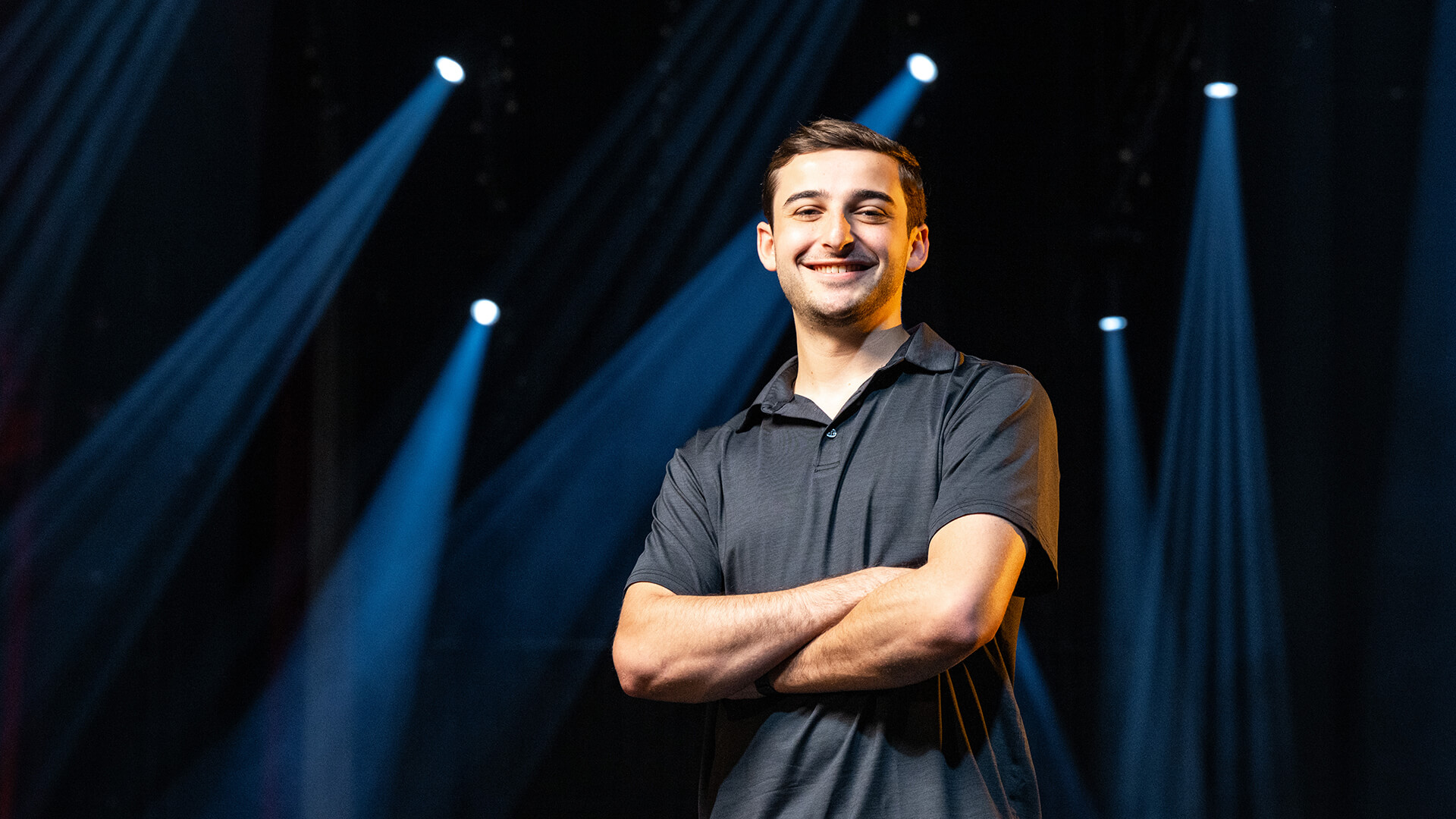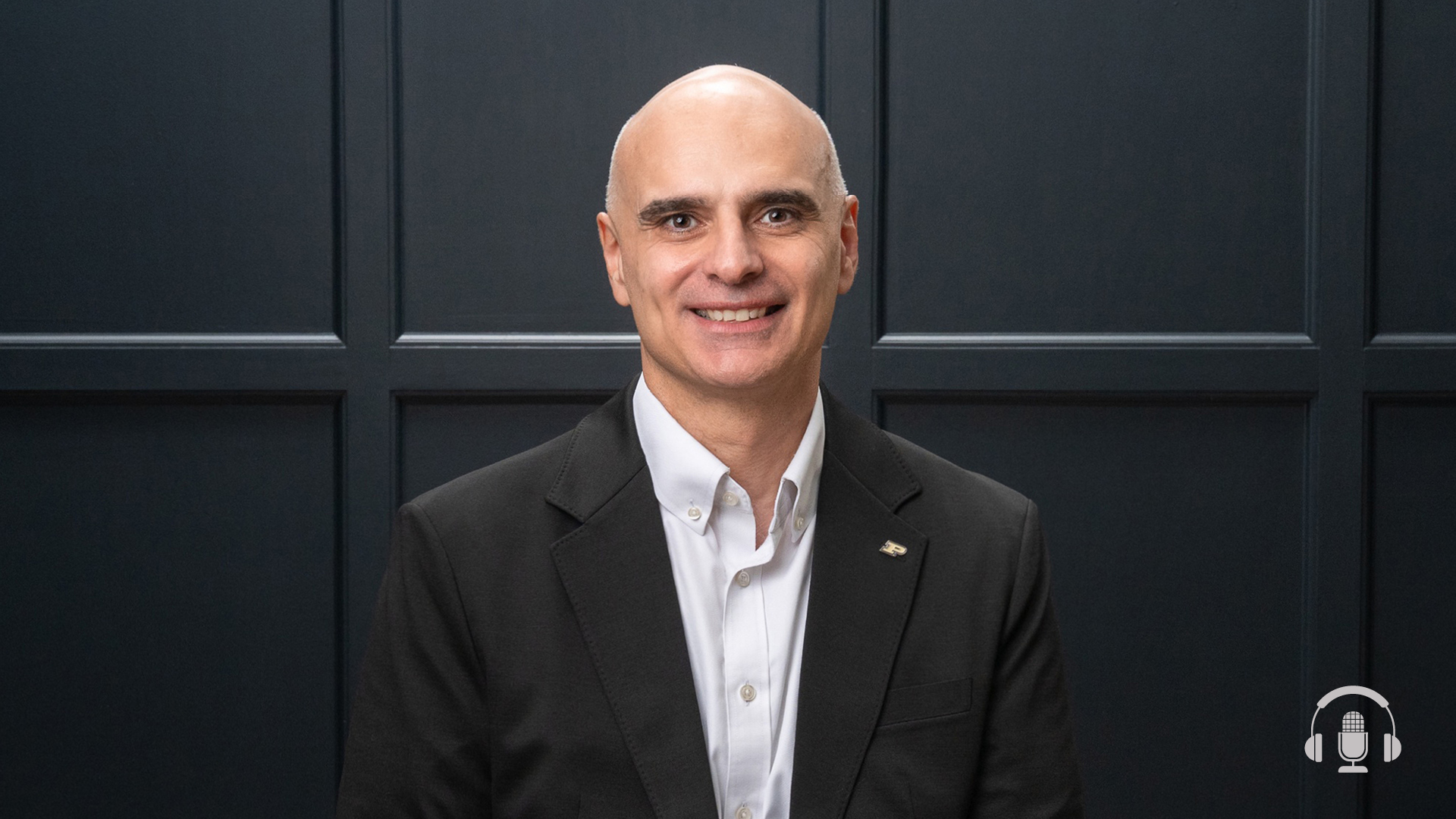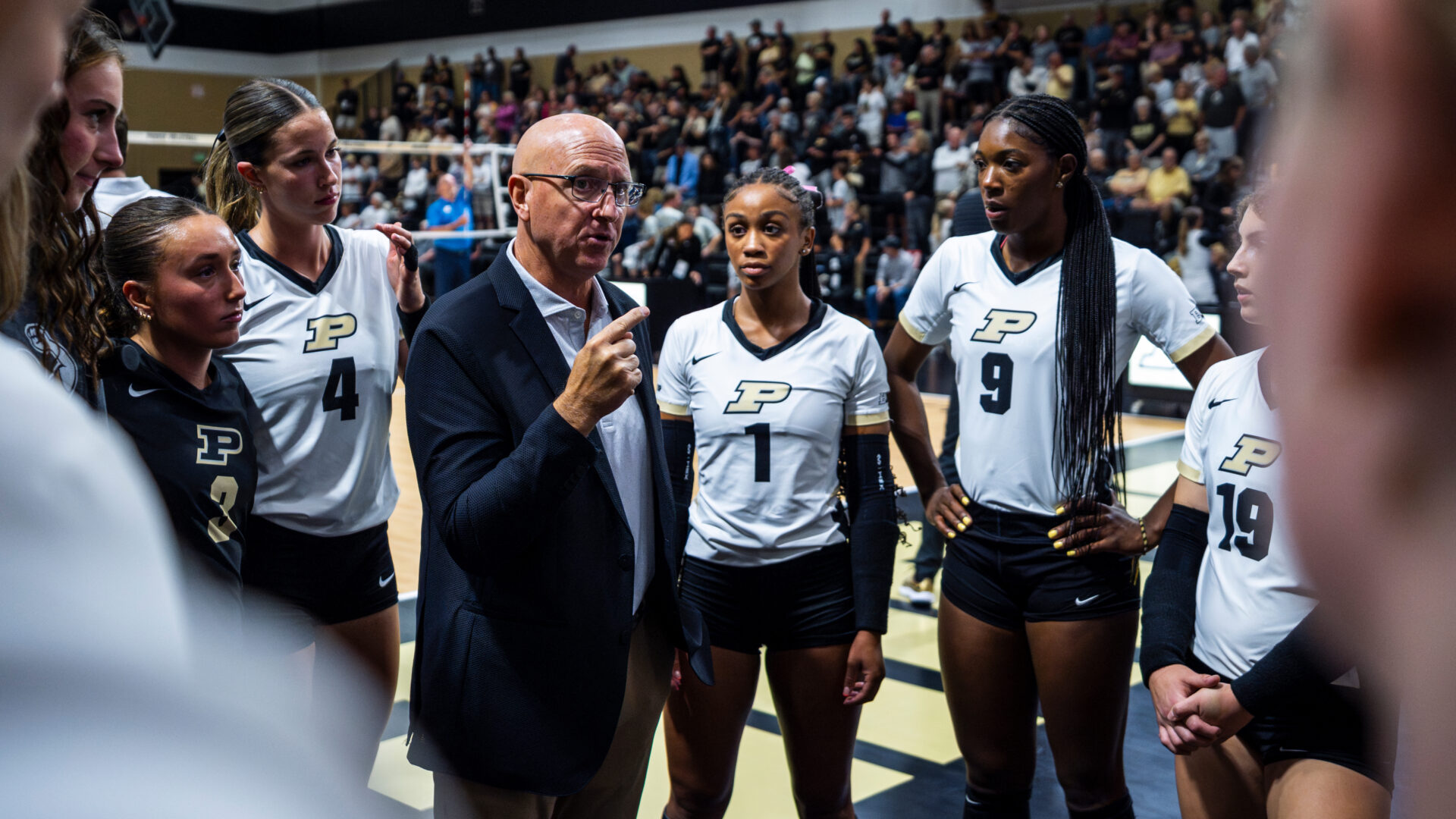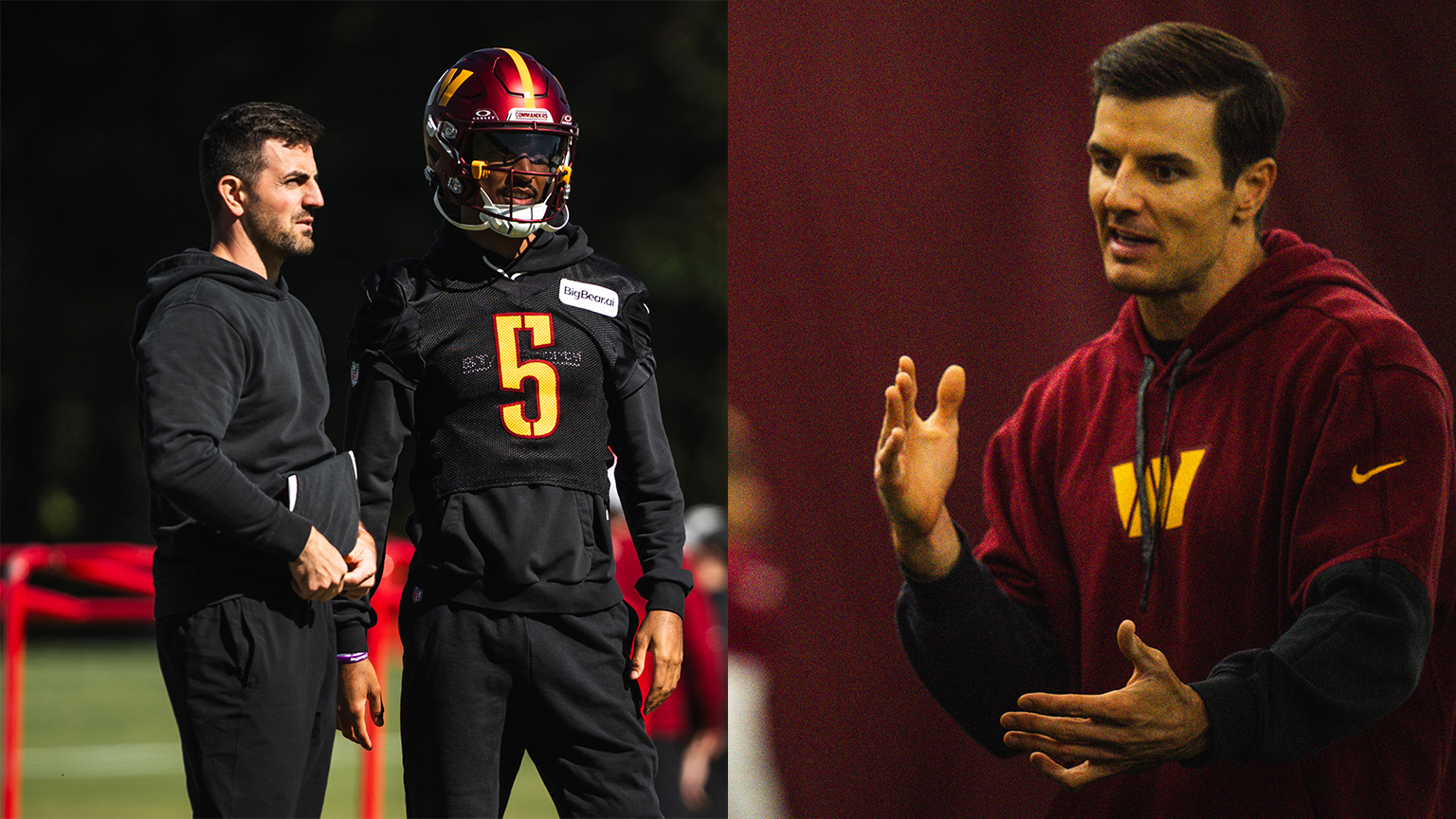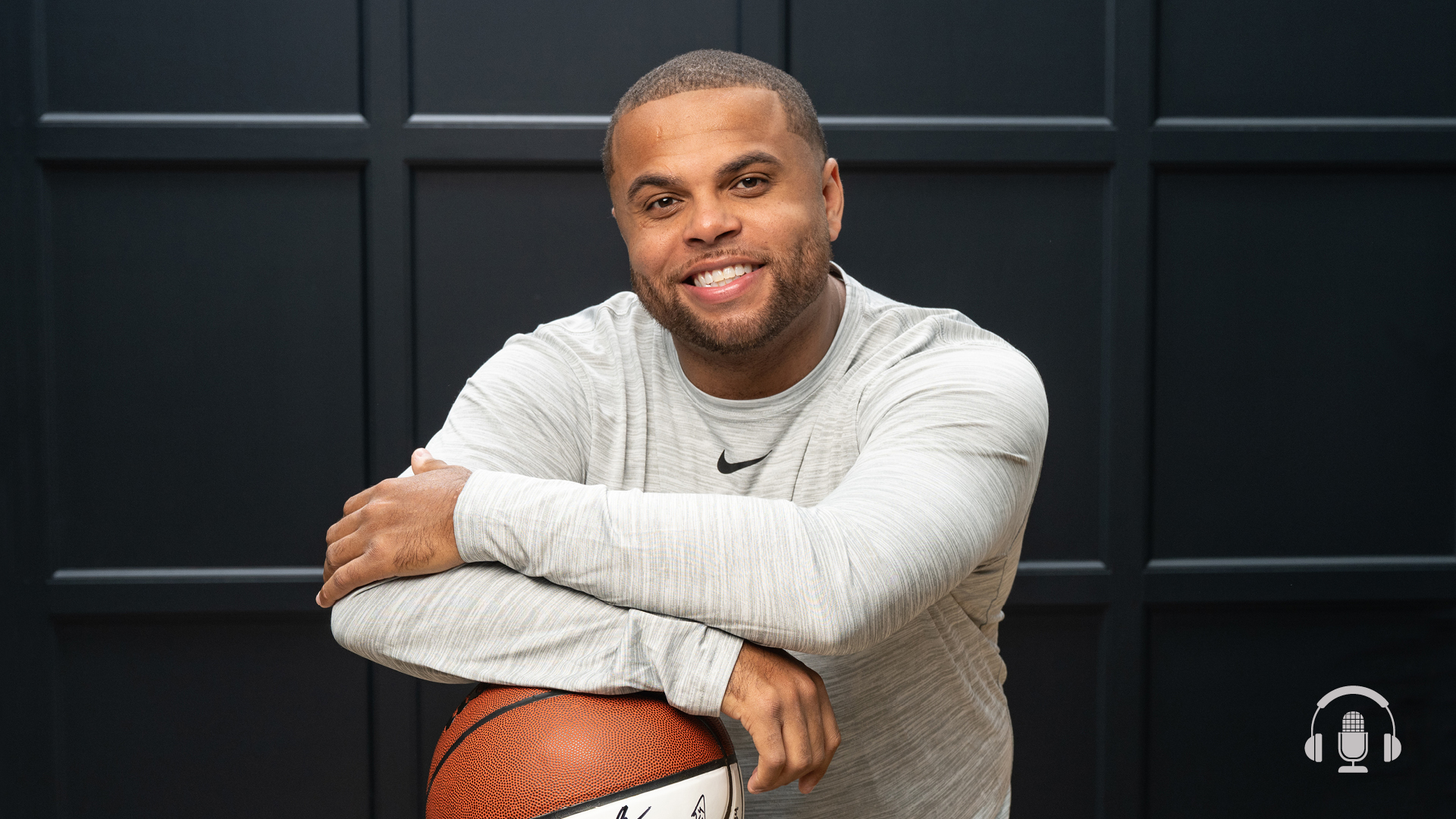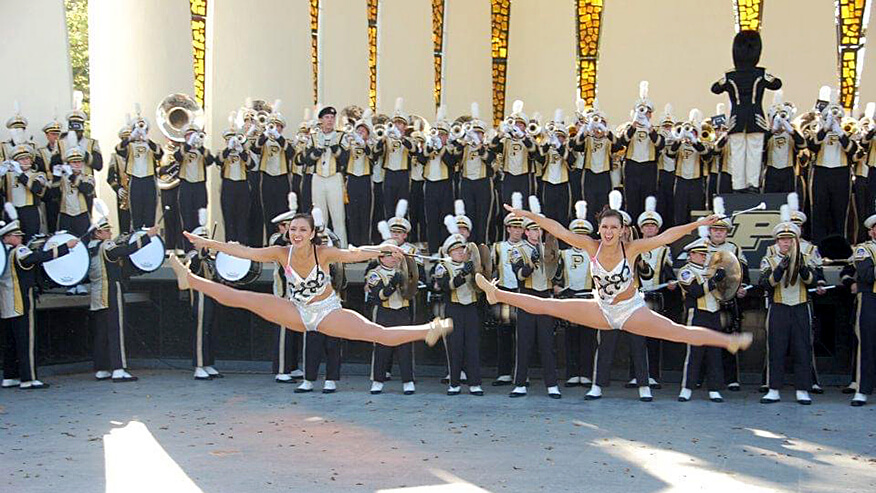Threads of Old Gold & Black: Purdue’s football uniform then and now
The Boilermakers' new gear mixes classic elements with a modern style

It was a small, tight, committed group of people. It had to be. There could be no leaks during the design process for Purdue’s new football uniforms.
Director of football creative services Ryan Long and associate director of equipment Kyle Gergely. Deputy athletics director Tiffini Grimes and director of creative services Paul Sadler were part of the circle, too.
“We had to keep it quiet,” Gergely says. “I had my wife and kids asking me all the time. But I wasn’t saying anything.”
Lips were zipped.
The new uniforms were a long time coming … seven years, to be exact, since the program’s base design changed back when Jeff Brohm hit town in 2017.
There was going to be a change in 2020. Then, COVID hit. And, well, you know …
Now, the new uniforms are here! It was a long process to get to this point, with Purdue unveiling its new look in July.
“We had to get it out before the debut of the EA Sports college football video game,” Long says. “Our new uniforms are in the game.”
No video game was gonna spoil this surprise.
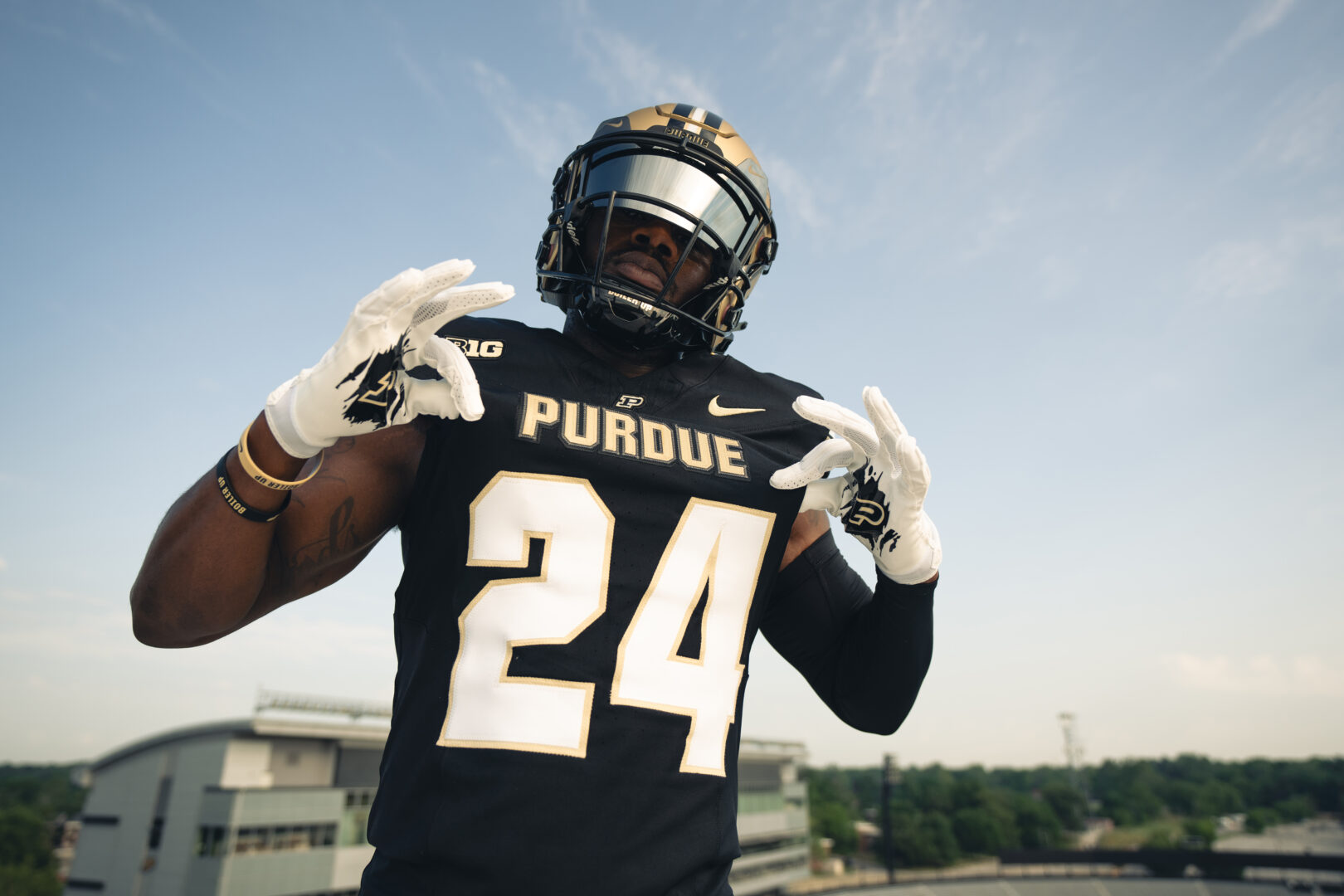

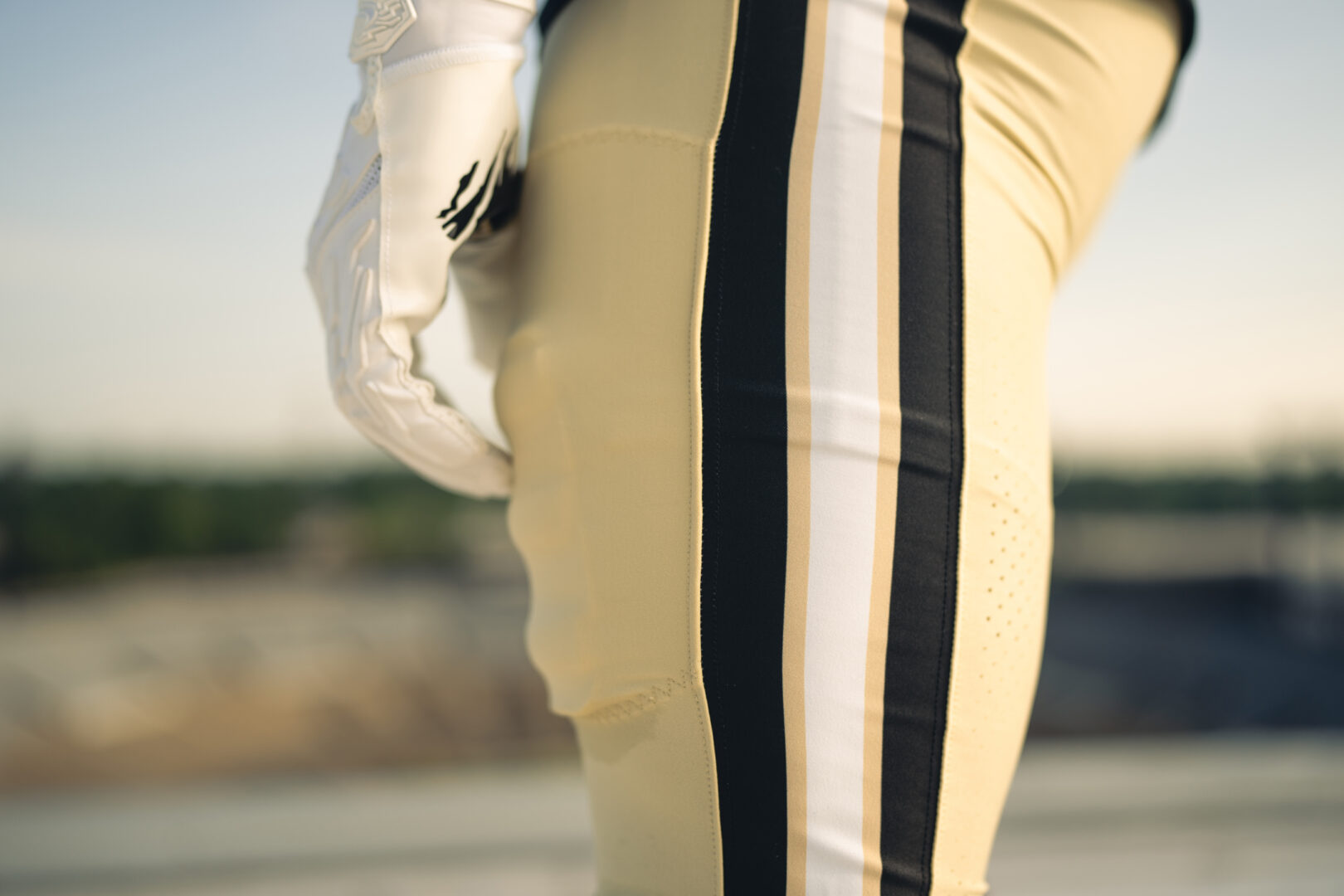

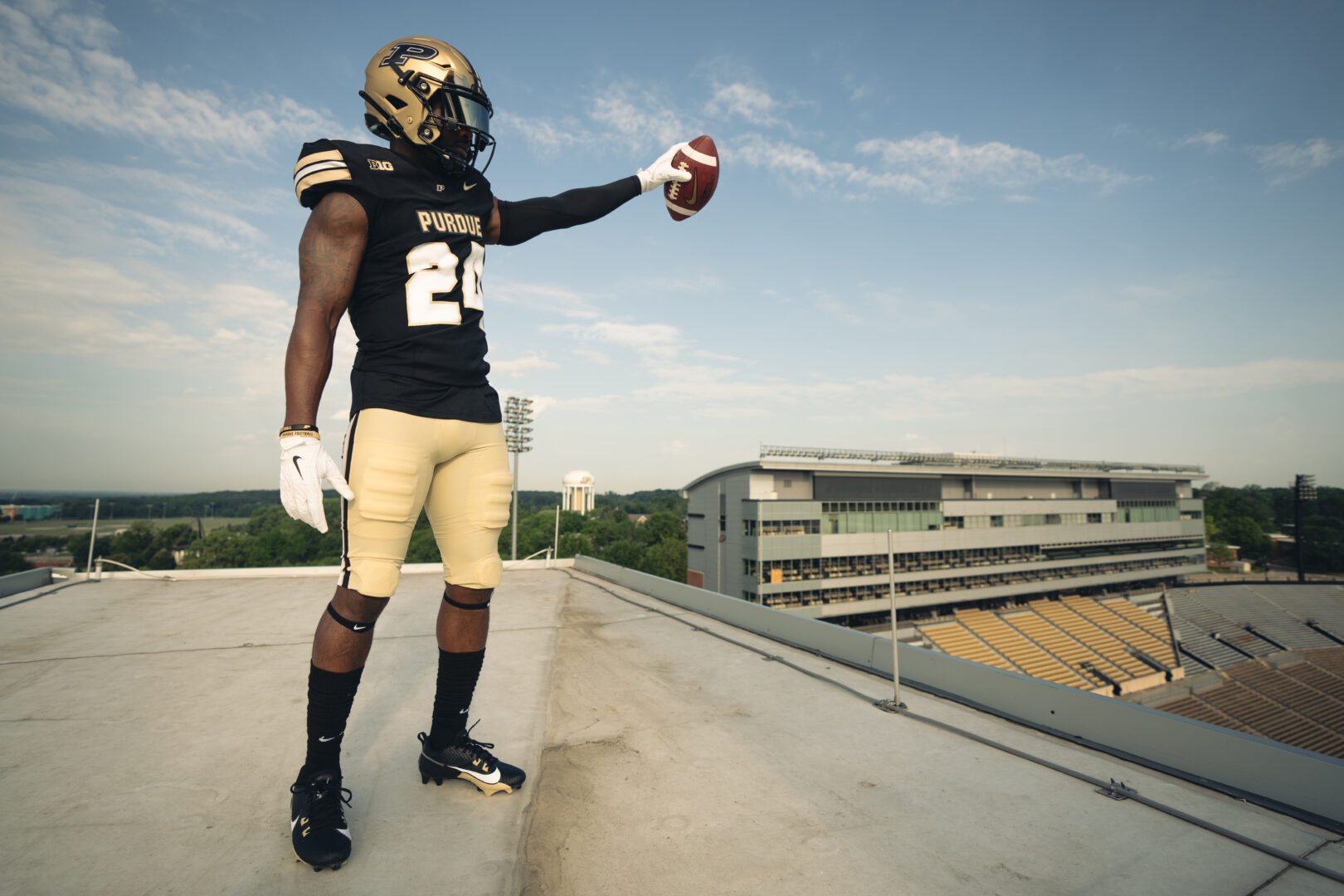
The new togs have received two thumbs up from fans. It’s a basic, clean look designed around Purdue’s classic gold and black colors.
“We wanted to stay true to Purdue,” Gergely says. “Brand identity was huge.”
The biggest change: “PURDUE” across the top of the chest.
“We went back and looked at jerseys that had ‘Purdue’ on the front,” Long says. “If you look at our jerseys for a long time, the ‘P’ on the helmet is the only thing that screamed ‘Purdue.’ Nothing says the word ‘Purdue,’ right? You had the letter ‘P.’
“Going back to the Mike Alstott era (1992-95) and putting ‘Purdue’ front and center, and making sure that from a branding perspective, at a glance, you knew who we were, was a big thing.”

The design process started almost two years ago.
“When we first met about it, the first thing we did was lay out a bunch of stuff in the equipment room,” Long says.
“Kyle went through and pulled a bunch of old jerseys, old stuff that we had so that we could look at all the elements and figure out what feels the most ‘Purdue’ about this stuff.”
Long and Co. had myriad details to consider. What type of stripes did they want on the pants? The shoulders? What color pattern looks the best on black jerseys versus white jerseys? On and on it went — details, details, details. None were too small.
“And so that whole process was just about identifying those elements,” Long says.
The result: Purdue has black and gold primary jerseys to match with black, gold or white pants. The helmet? There’s a gold and black one.
“And we have a special jersey and pants that are going to come out (for the Oct. 18, 2024 Oregon game),” Long says. “There will be a one-off helmet, too. It will be different from the standard black helmet.
“Coach wanted to have a strong, ‘Here’s our white look, here’s our black look,’” Long says. “We can switch it up with different pant combos. But we want to be consistently brand identifiable.”
There will be no mistaking Purdue for anyone else.
Purdue football uniforms through the years
1880s-1920s
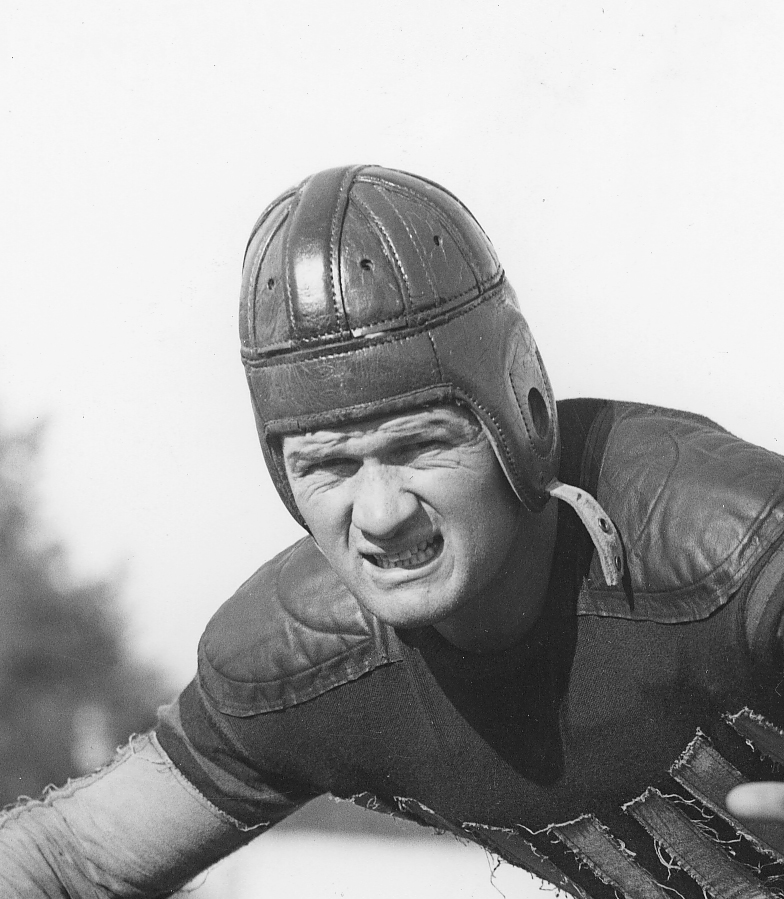
Bulbus leather helmets defined this era. Facemasks? Ha! Yeah, right. These were men with names like “Elmer Sleight” who rubbed dirt on wounds and got back in the game. The early teams sported stocking caps with a bobo on top! It’s good to wear on the sideline today, but these chaps played with it on. The pants were loose-fitting. The socks had some flair with rings. The jerseys had solid rectangular blocks on the front and stripes on the arms. It’s unclear why. Where were the numbers? In the 1890s, there was a “P” on the jersey.
1930s

Say “hello” to the leatherheads. A “P” adorned the forehead of the winged headgear. The pants? Loose-fitting, baggy. The jerseys were solid black with gold numbers. Another variation of the jersey was a black base with blocks and squares filled in around a number.
1940s

Strap on your leather helmet and take a lap around the field with Alex Agase.
Nothing fancy in this decade. Shiny gold pants were a staple. The jerseys? White and black. The white jersey had three stripes around the biceps. The thigh-high black socks were a nice touch.
The helmets were black with gold wings, a popular look then. Purdue looked good in them while going unbeaten in 1943 and ranking No. 4 in the final AP poll for coach Elmer Burnham with an eclectic roster featuring players from across the nation during World War II.
1950s
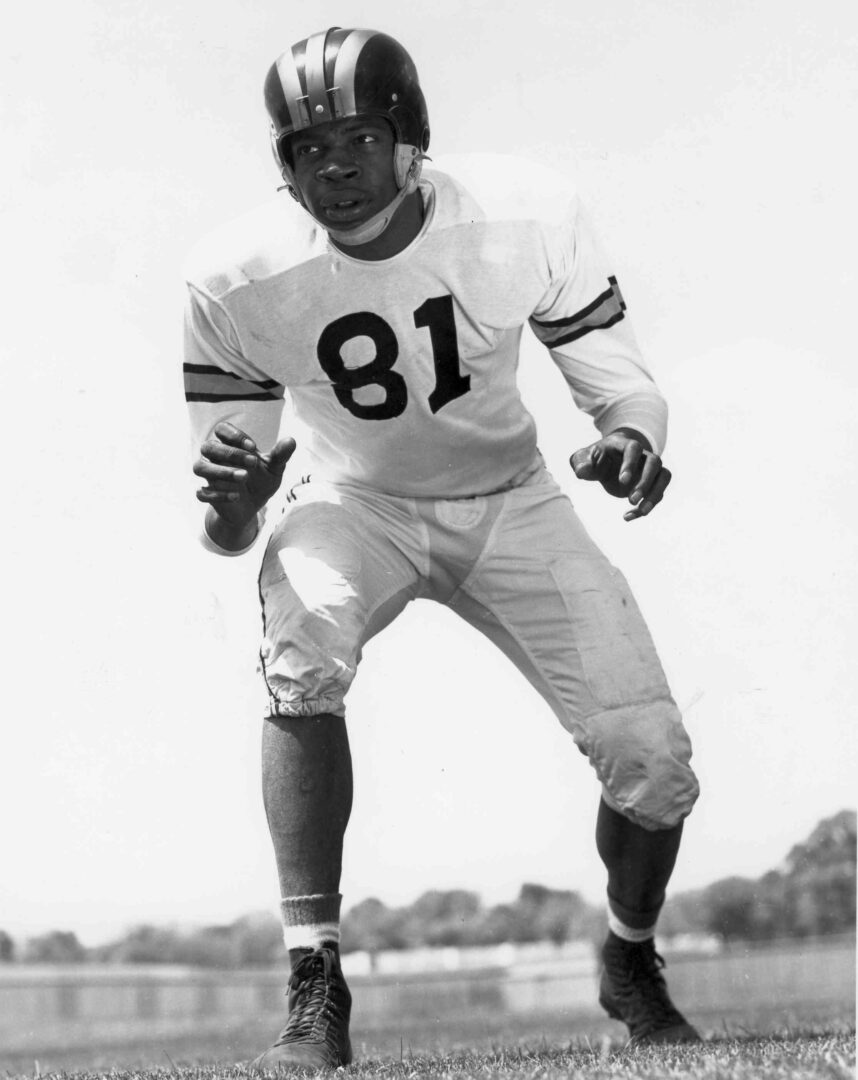
Understand, the 1950s were a conservative time. The country was coming off a world war, families were started in prefabricated houses, leafy suburbs were spawned, and Detroit churned out four-door sedans to take the kids to grandma’s house over the river and through the woods.
The uniforms worn by 1952 All-America end Bernie Flowers in this era reflected that. The pants? Basic white. Defensive end Lamar Lundy terrorized quarterbacks while sporting a white or black shirt with thin black-gold-black armbands on each sleeve.
The helmet base worn by Len Dawson and Dale Samuels, as they engineered upsets of Notre Dame, was black painted with three stripes running from front to back. By the decade’s end, the three stripes had been replaced by one and numbers were painted on both sides.
No doubt, Dwight Eisenhower would have approved of the staid design. No need to be pretentious. The garish 1970s were still 20 years away.
1960s


The days of rage, with protests from Berkeley to Chapel Hill, saw Purdue dominate the sport while fashioning a classic, conservative look.
Close your eyes and imagine Bob Griese wearing deep gold pants while dropping back to pass to Jim Beirne. Or think about Mike Phipps rolling out wearing a black jersey with a two-inch gold stripe running along the shoulder from neck to arm as he tosses a dart to Ashley Bell.
The Purdue uniforms during this golden era were basic and classy. The gold helmet with the single black stripe down the middle? It featured each player’s number stenciled to the sides so Jack “The Ripper” Mollenkopf knew who he was yelling at.
The 1960s jerseys also saw Purdue have a black/gold/black band on the outer shoulder sleeves. The Boilers also had a basic black jersey with gold and black piping on the sleeves. Simple and understated.
Purdue had a special helmet during the university’s centennial in 1969, featuring a gold block “P” that incorporated a “u” in it with a “100” below all encased in a football. And each player’s number was affixed in giant numbers on the back of the helmets. Even an alum from the 1920s would have no issues seeing those from a high perch in the end zone on a cool Saturday afternoon in November.
1970s
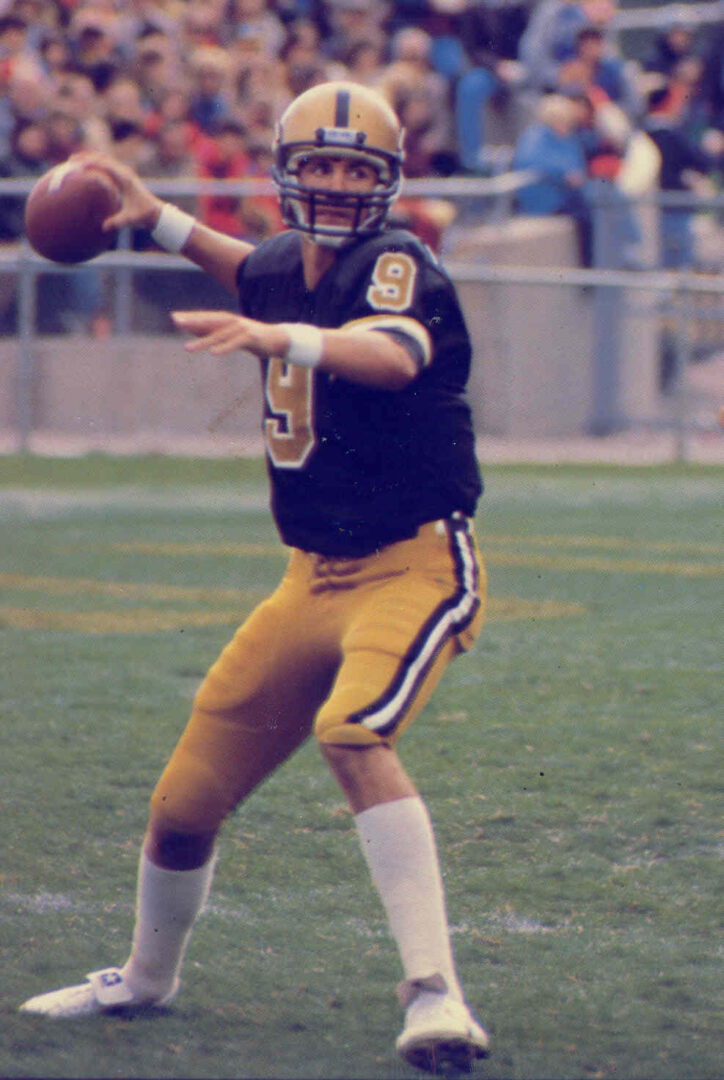
Say “hello” to the block “P” on the helmet, a classic fixture from a groovy decade that remains to this day. The headgear was accented by a single black stripe down the middle and player numbers on the back. Otis Armstrong made them come alive while streaking to pay dirt.
Scott Dierking looked good upsetting No. 1 Michigan in 1976 in a jersey with gold/white/gold stripes on the upper shoulders, which defined the first part of the decade.
By the time Mark Herrmann aerials were piercing the October sky above Ross-Ade Stadium in the late 1970s, mesh jerseys and BIKE helmets were the order of the day. The jerseys came alive with some outlining.
One common theme in the 1970s: The pants remained in a deep old gold hue.
Oh, and names were on the back of the jersey for the first time. Now, you could use your binoculars to spy the Junk Defense members’ names. Who got that sack? “Turner.” A uniform template had been laid as a dominating late-1970s run gave way to the 1980s.
1980s
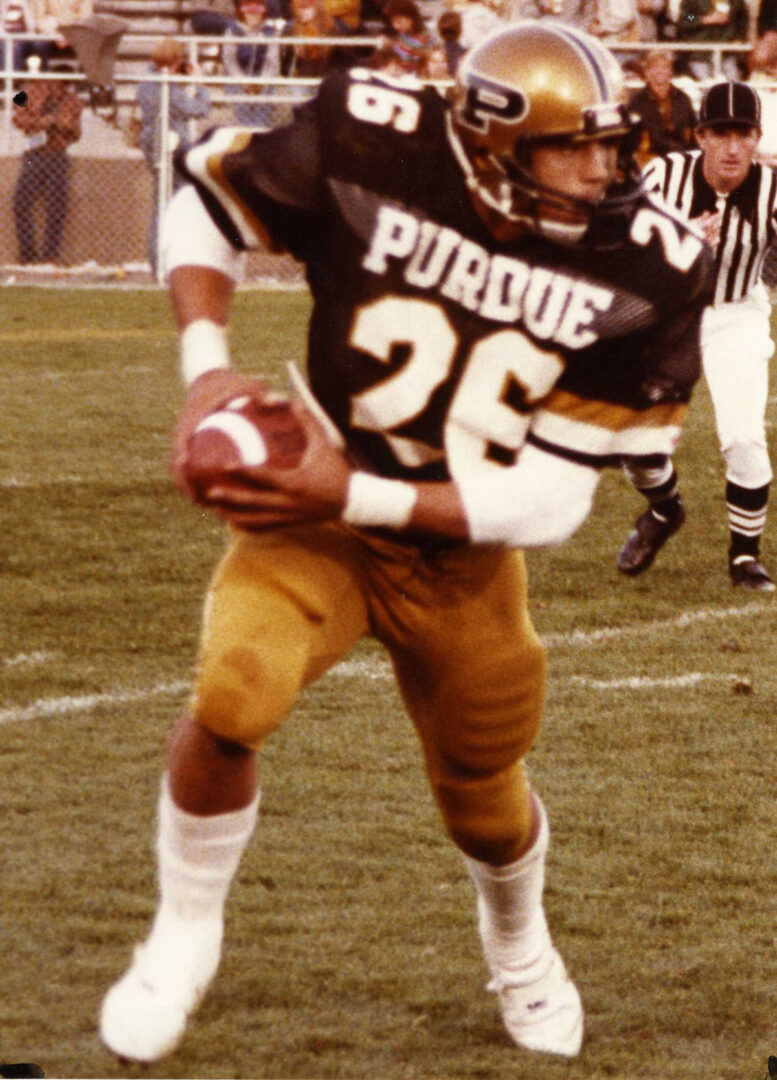
This period is best remembered for the one-off look in the Old Oaken Bucket game in 1986 … otherwise known as the “Rod Woodson Game.” That day, Purdue warmed up in its traditional black jersey. But when it returned from the locker room for kickoff, the squad was wearing gold jerseys, reportedly purchased by the players. That energized the crowd and inspired Purdue to a win for coach Leon Burtnett, who had Woodson play offense, defense and special teams in one of the most memorable efforts in Ross-Ade annals. The big change during the 1980s: “PURDUE” was added across the top of the jersey front. Opponents would know who they played when Jim Everett was chucking bombs before becoming the No. 3 overall pick in the 1986 NFL draft.
Also of note: For the first time, Purdue often wore all-black at home, eschewing gold pants. It was a sinister and sweet look that would be replicated often in the coming decades.
The decade also closed with a big uniform twist under coach Fred Akers in 1989: black helmets. The team hadn’t sported black headgear since the 1950s, but it didn’t last long during a dreary end to the decade.
1990s
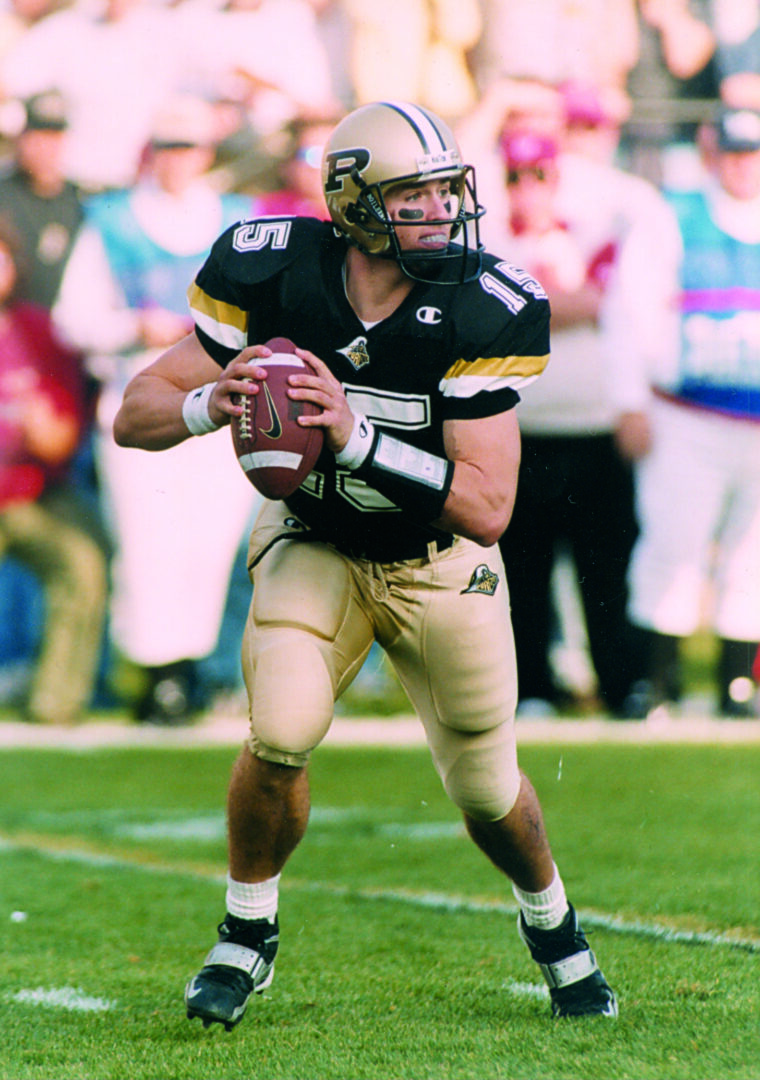
Lots of change. First, the black helmets were mothballed after 1990. Enter Jim Colletto, who smartly handed off to Alstott in new uniforms. The last things opponent saw before being trucked by the A-Train was “PURDUE” across this chest. In 1994, Purdue had a patch on its jersey to commemorate the 125th anniversary of college football.
Take note of 1996, as it’s when we would see a big alteration to the helmet: a motion “P” that remains to this day.
Joe Tiller brought basketball on grass to Purdue — and a lot of uniform incarnations. No more “PURDUE” across the jersey chest plate. Jerseys now featured thick gold and white stripes on the sleeves and a Purdue train logo under the neckline. Numbers popped with outlining, and “Old” gold gave way to the lighter “Vegas” gold.
The new look was part of a new winning tradition that saw Drew Brees help ignite a run of 10 bowls in 12 years under the iconic Tiller.
2000s
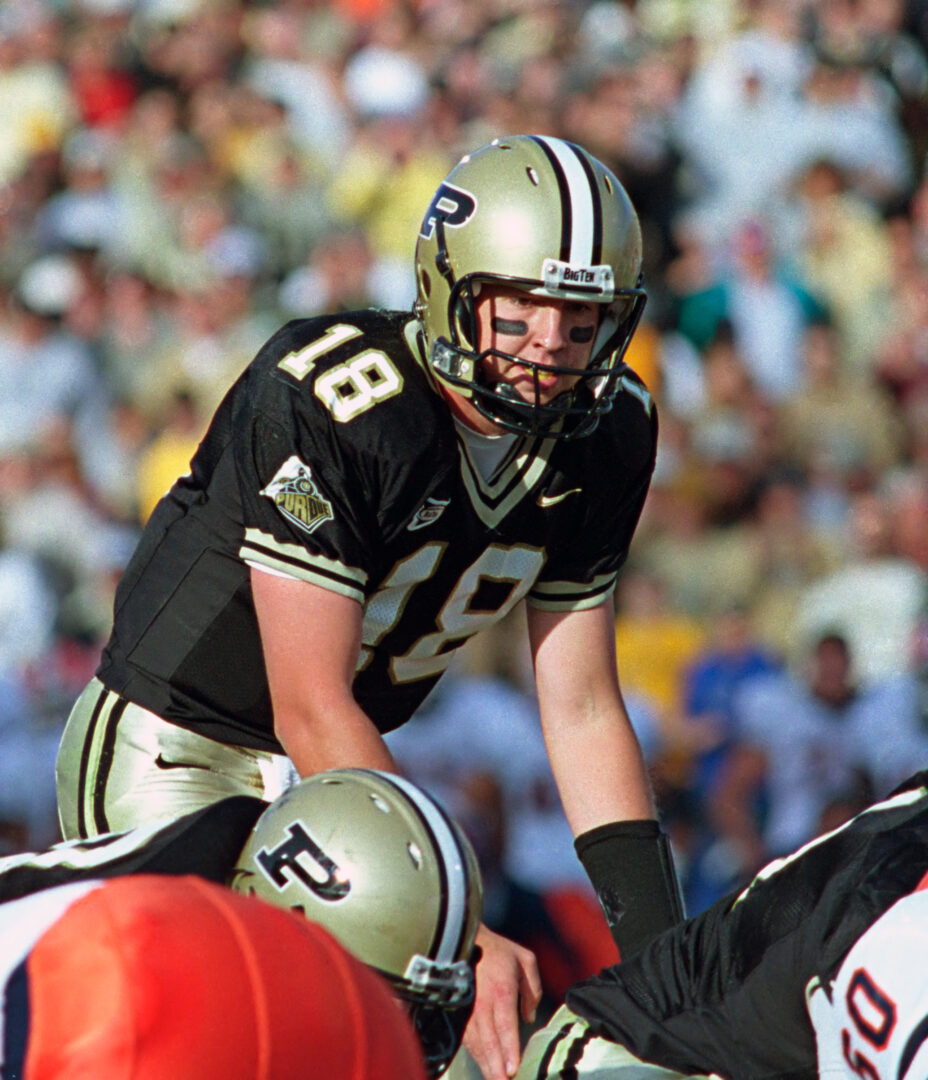
There was no fear of Y2K in West Lafayette with Brees back for his senior year in 2000. And he didn’t disappoint, leading the Boilermakers to the Rose Bowl. The helmets of Brees, Tim Stratton and Vinny Sutherland featured a rose woven into the “P.”
Following the World Trade Center attack, Purdue, like all college teams in 2001, wore an American flag on its jersey.
A bigger change came in 2002 when Purdue brought back gold jerseys with white numbers outlined in black. It was a look Tiller apparently wanted with his wife Arnette’s assistance. And who’s gonna argue with him? Tiller’s squads kept on winning, and winning, and winning. Purdue reverted back to black jerseys early in 2003 when Kyle Orton looked good, dropping dimes in a black-gold-black V-neck jersey with a Purdue train logo on the sleeves.
When Danny Hope took over in 2009, Purdue often wore all black or all white. The pants were accented with a Purdue train logo affixed to a hip.
2010s to today
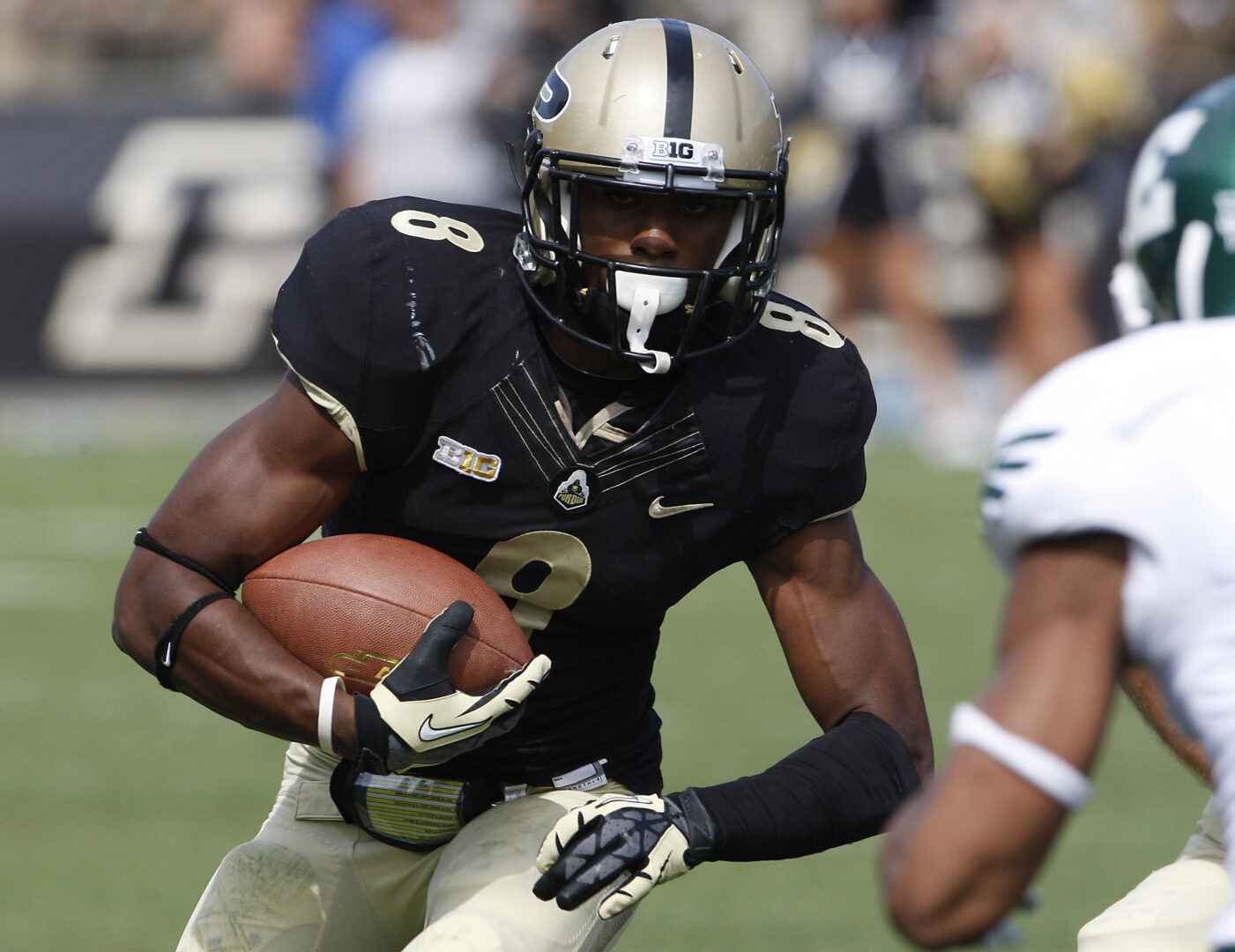
By the middle of this decade, the black helmets were back and included a train track running down the center from front to back — an homage to the Boilermaker Special. One incarnation of jersey numbers had “motion.”
This decade saw one of the most unique touches ever. In 2014, Purdue had a helmet “P” that included photos submitted by season ticket holders and students … around 240 in all. That same year, Purdue had a neon yellow stripe running down the center with a neon yellow ribbon on the back. The Purdue “P” also was neon yellow. To continue the theme, players had neon yellow shoelaces, socks and gloves. It was all to support cancer research conducted at Purdue.
The year before, the team once sported a “P” illustrated like a flag.
Brohm took over in 2017, and a slick gold chrome helmet was introduced. That kicked off what has become an anything-goes era that continues to this day.
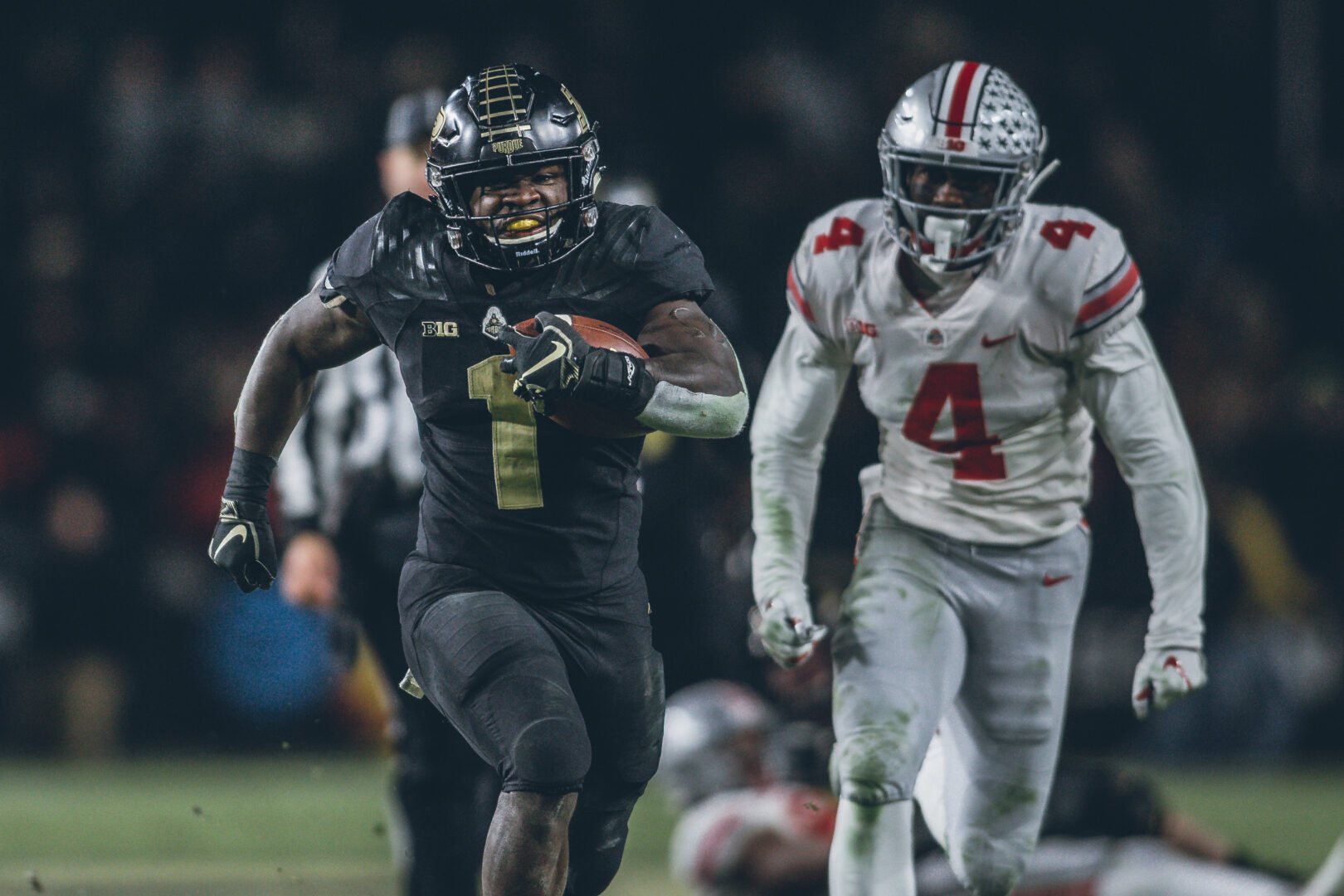
Black helmet, gold helmet, gray jerseys and pants, two-tone jerseys. Of note: In 2019, the squad wore an all-white uni designed to replicate the look of an astronaut in honor of the 50th anniversary of NASA’s Apollo 11 lunar mission and Purdue’s status as the Cradle of Astronauts™. The helmet featured a chrome stripe down the middle with footprints emblematic of alum Neil Armstrong’s first steps on the moon.

Now, the Boilermakers embark on a new era of threads, with some of the best elements of the past and present mixed into a sleek but classic look.
The new jerseys are available in the Purdue Team Store.
Written by Tom Dienhart, associate editor of GoldandBlack.com


